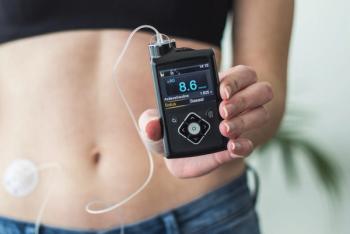
The 4-second Rx review: Who benefits?
A letter about Walgreens' POWER program gets David Stanley asking questions.
Key Points
But the letters keep coming in.
Review in seconds
"I am a pharmacist who is under the most stress of my career trying to keep my position under this new program. We have 11 or less seconds to review an Rx for data accuracy ... and less than 8 seconds to review it clinically for interactions and dosings. They are actually riding us now to do clinical in 4 seconds [as of] our last meeting. Do you know how hard it is to look up a drug/dosing in 4 seconds? If we do not accomplish this timing, our 'metrics' are out the door ... We are put on level 1 discipline, then level 2, then we are given a 'life line' to find another position."
For those readers who don't know, Walgreens' POWER program, currently being tested in Arizona and Florida, is an initiative that may radically and permanently change the way pharmacy is practiced in this country. In a nutshell, the idea is to move as much work as possible away from the store level. Prescriptions are scanned into a computer system, verified by an at-home pharmacist, filled centrally, and shipped to the store to be sold.
Ask Walgreens
Being disciplined for taking longer than 4 seconds to evaluate a potential drug interaction isn't quite the future we were promised when I was in pharmacy school, so I decided to write to Walgreens to ask whether it disputed the accuracy of any of those numbers.
Walgreens immediately responded by contacting the editor of Drug Topics.
I don't know exactly what was said, as Walgreens chose not to include me in its communication, but the move struck me as odd. All I asked was a simple question that could have been answered with one word.
Eventually Walgreens did get back to me, and this is what it had to say:
"Per company policy, we do not comment on metrics that are considered proprietary and not otherwise provided externally.
"Quality and accuracy are our top priorities and our quality team continuously tracks these criteria at every step of the prescription filling process.
"Unlike a traditional retail model, a central pharmacy environment allows professionals to focus on a singular task matched to their particular strengths.
"As a result, staff turnover for our pharmacists is virtually nonexistent."
Walgreens had every chance to simply say "No, those numbers are not accurate," yet it never did. I find that interesting, not to mention frightening for the future of our profession.
Hyperbole, of course
The letter from the Walgreens' pharmacist also said this:
"Why do I not complain? ... Because I know I would be out the door. I need this job for very personal reasons. Each one of us has our personal reasons why we are doing this 'at-home' job on our computer. I can sympathize with Mr. Bhat, but if I went on a hunger strike, I can assure you that Walgreens would walk over my dead body."
Hyperbole, of course. We all know that Walgreens has no intention of purposely killing its employees or customers. But such hyperbole could explain that lack of pharmacist turnover Walgreens seemed so eager to point out. That, and the store-level pharmacist layoffs frequently mentioned on internet message forums dedicated to the POWER program.
I would have loved to have written this column about microscopic Capoten tablets, and I would love to reach my old age universally beloved. Unfortunately these are not lighthearted times in our profession, so I doubt that either will happen.
Good luck to us all.
David Stanley is a practicing community pharmacist in California. He can be reached at
.
Newsletter
Pharmacy practice is always changing. Stay ahead of the curve with the Drug Topics newsletter and get the latest drug information, industry trends, and patient care tips.




































































































































